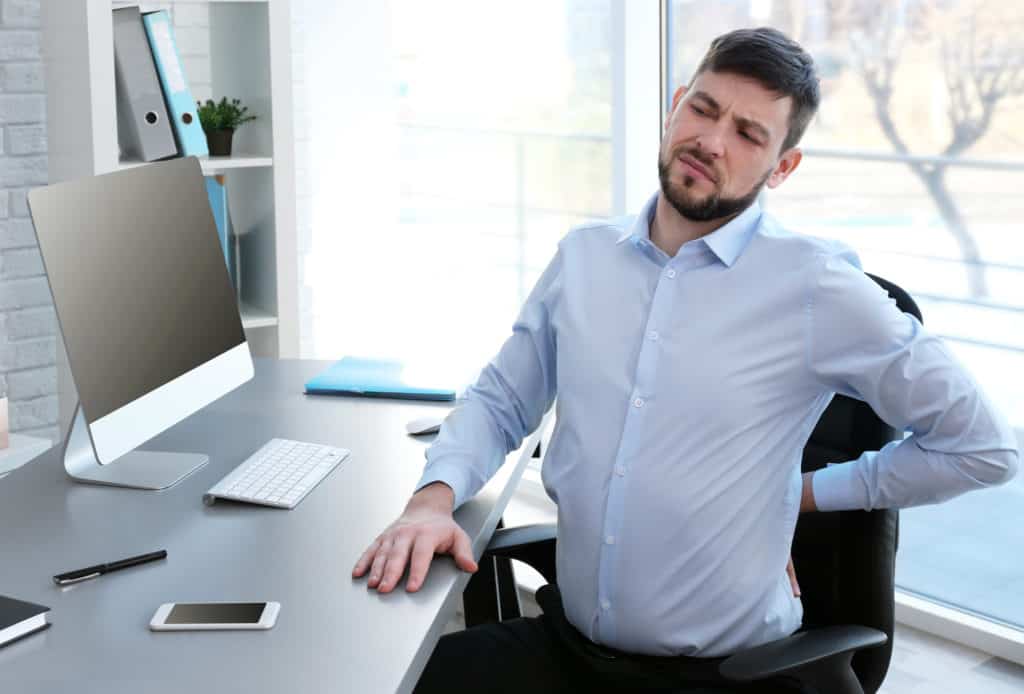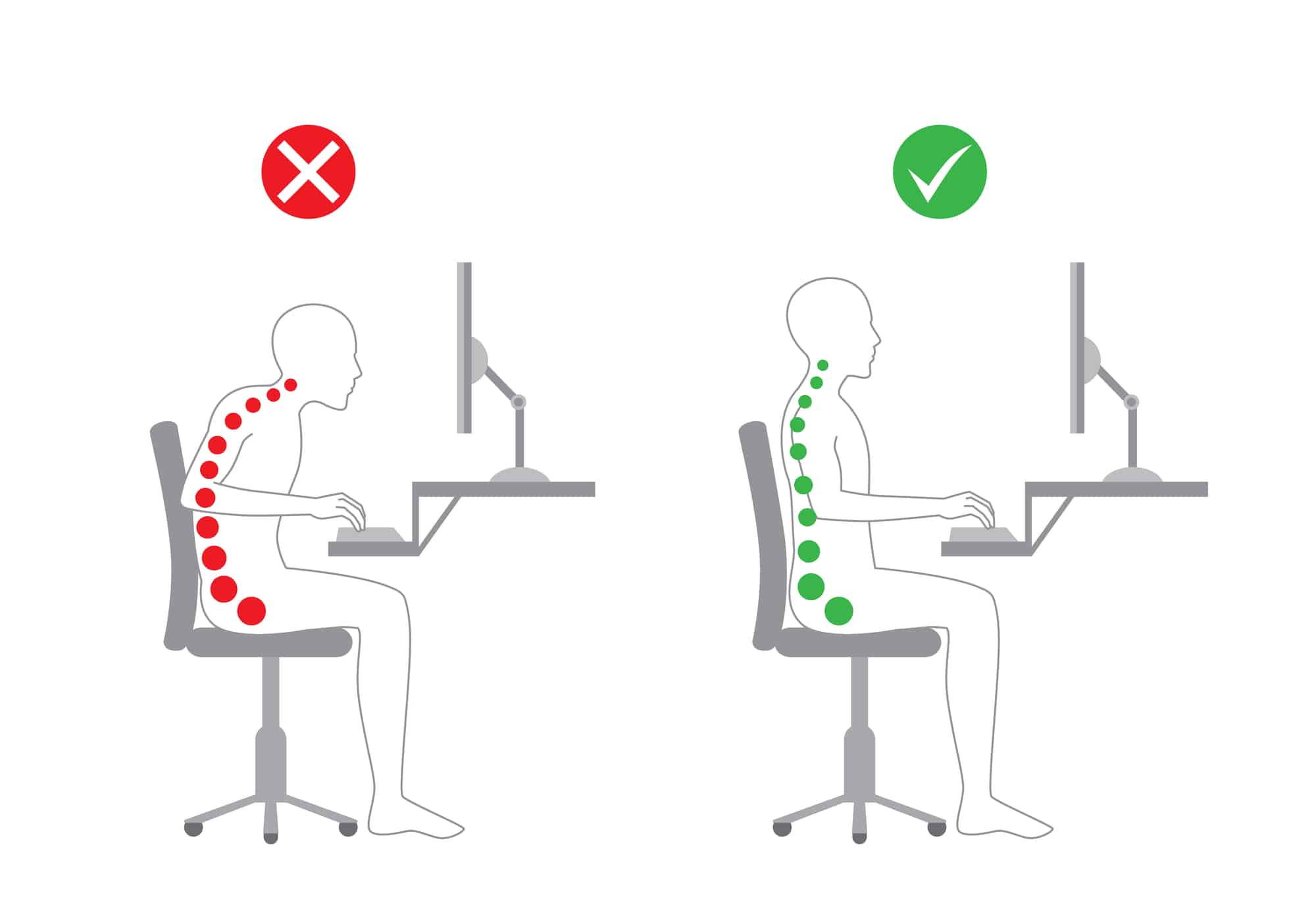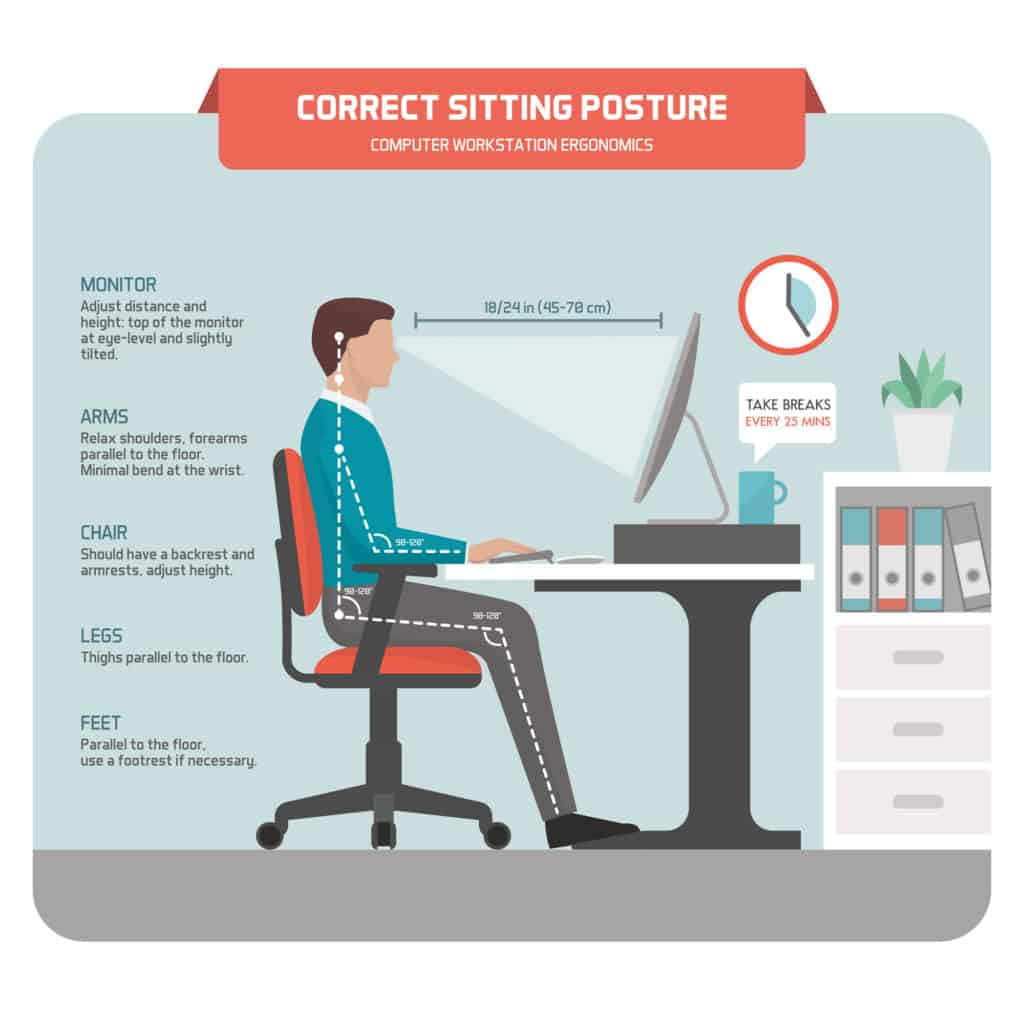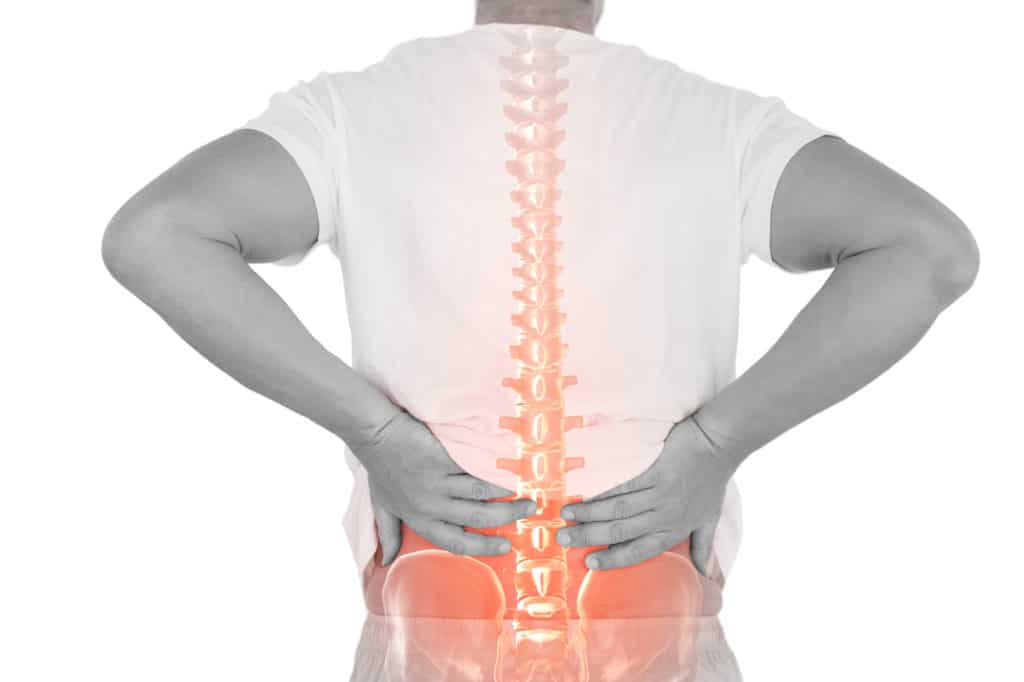
Does your back ache when you’re at work?
If so, you could be doing long-term damage, whether it's slouching over a desk, lifting heavy objects, or repeatedly moving in specific ways as part of your job.
Over time, these things can all cause problems with your back, causing chronic pain. But the good news is you can prevent it.
We know that when people spend the better part of the day sitting at a desk or slouched over any workstation for hours, they will sometimes experience back pain – whether it's five, ten, or fifteen years from now. It's coming.
Plus, even if you don't work at a desk or similar, you are still likely to suffer from back pain at some point in your life.
That’s the reality (unless you take steps to prevent it with physical therapy, strengthening exercises, and good mobility practice). If you ignore it, things can and do get much worse.
This increase in the risk of back pain is because remaining sedentary and inactive for extended periods – whether it’s when you’re home watching Netflix or at work - causes tension and stiffness in the back.
This tension, combined with bending and twisting and sitting in awkward positions while sitting down, further raises your risk of back pain.
This back pain is caused by inactivity and awkward postures - it can be intense and come on suddenly due to sudden movements or from twisting your spine.
But it may also occur as a dull throbbing pain that develops over time. It can be acute and last for a couple of weeks or become chronic and remain for months.
More Blogs From Cardin & Miller Physical Therapy
Diabetes: Why Taking Care of Your Feet Is So Important
Diabetes: Why Taking Care of Your Feet Is So Important (Part 2)
What Causes Vertigo? And What Can I Do About It?
What kind of back pain do you have?

If you have pain in the lower back for 4-12 weeks, we call it “subacute pain."
But generally, lower back pain lasts for a short duration and improves with time.
However, around 20% of those with lower back pain are likely to see it develop from acute pain to chronic pain over time.
We also know that if you're over 50, you are more likely to experience chronic back pain. This increased risk is also magnified if you are over 50 and have a sedentary job – due to the lack of physical activity, inappropriate sitting posture, and/or a non-ergonomically designed workplace.
What Are The Most Common Causes Of Back Pain At Work?
Almost all professions require the use of monitors, laptops, and other devices – or long periods of sitting, so it could be a combination of factors causing your back pain.
But an effective way to determine the origin of your back pain is to scrutinize your routine.
Do you get up, move around, and "stretch your legs" regularly?
- How is your office equipment, including your desk, computer, and chair, placed?
- Is it ergonomic? (Designed for comfort and efficiency) i.e., is your monitor at eye level?
If you want to avoid back pain at work, the way you sit and your head and neck position are crucially important and should be considered.
Incorrect posture is among the leading causes of back pain in the office. That's because you may slouch or slide forward toward the computer monitor while working.
Plus, sitting for long periods leads to fatigue that, in turn, causes poor (or, in most cases, even worse) posture.
In addition, sitting in a poor posture causes stress on the disks and ligaments of your spine. Similarly, resting your phone between your neck and shoulders increases spinal tension.
More specifically, sitting for a prolonged period without stretching or standing at regular intervals causes back issues because remaining sedentary for long periods compresses the spinal disks and presses the moisture out.
This compression leads to the disks bulging, causing spinal pressure. This spinal pressure can also cause tingling, numbness, and, eventually, pain generated by the spine that is worse when standing or walking.
Some of these things you can change by consciously thinking about your posture and making an extra effort to sit up straight.
However, it also crucially depends on the design of your workplace. For example, when you need to twist or bend to reach frequently as part of your job, there is an increased possibility of back pain.
Likewise, a workspace with limited space or a chair that does not support the lower lumbar region of your spine will also create posture issues and cause back pain.
Other causes of back pain can include an inactive lifestyle, stress, and no exercise. In particular, those suffering from anxiety or stress may develop muscular tension that aggravates spinal pain.
In addition, people who suffer from weak back muscles and are obese also experience more significant back pressure that leads to back pain.
How To Decrease Back Pain At Work?

The fastest and easiest way to decrease back pain at work is to concentrate on your posture and ensure your workstation is well-designed to limit pain.
Adopting "safe movements," moving more, and living a healthy lifestyle also helps.
Here are a few of our favorite tips to reduce back pain in the office:
Have a well-designed workspace:
In a well-designed workspace, you can quickly reach for things without putting strain on your back. You should also adjust the height of the monitors, table/desk, and chairs to help you maintain a good posture while working.
Keep everything within easy reach:
Before starting work, ensure that everything you need for your daily work needs is easily reachable within an arm's length away without strain or stretch.
Adjust monitor height:
Your computer/workstation monitor should be at the right eye level, so you don’t have to lean forward or backward. The size of the fonts and the screen's brightness should also be comfortable without having to squint and read or move forwards or backward to see.
Your chair should be at the right height:
Make sure that your chair is at a height that means you do not need to lean forward or upwards and that your elbows are at a 75-degree angle when your arms are on the desk while sitting upright.
Invest in a good chair:

Buying the right chair – with good lumbar support and an adjustable height - will help improve your posture and prevent back pain at work.
The chair should be adaptable to the size of your desk, enabling your elbows to rest more comfortably while sitting.
It should also have a good backrest and armrest. The backrests should be adjustable with the proper seat depth for a good level of comfort.
The armrests should raise slightly, so you can relax your shoulders when your arms rest on them to prevent you from slouching too much.
The lower back should also get proper lumbar support from a good chair. It needs to offer good support but also allows the normal curvature of your spinal cord.
If you can't invest in a new chair right now, use a small pillow as back support, so your posture always remains upright. Pay attention to the padding, too.
The padding on the seat and the back should be soft and comfortable so that you do not feel tired after hours sitting at your desk.
Choosing a chair with the option to rotate or swivel can also prevent too much stress on the torso if you need to twist or turn at work.
Maintain the proper posture:
Most people start to lean forwards or slouch while sitting for a long duration. This, over time, leads to severe back issues.
Therefore, you need always to maintain a good posture when you’re sitting at work. Maintaining a good posture reduces your risk of back pain at work.
Your neck and head should always be above your shoulder, with your back resting against the backrest where possible.
When working at a computer, keep your shoulders back and “square” with your feet flat on the ground and your knees at a 90-degree angle to stabilize your body.
Are you in pain now?

If you have back pain, we can help you find and fix the root cause and educate you on how to make lifestyle and activity changes that prevent the problem from ever reoccurring.
You don't need to keep popping pain pills or having steroid injections into your back, we can fix it once and for all, so it becomes a thing of the past.
So, if you’re ready to get out of pain, book your free consultation now.
We’ll explain exactly what is going on with your back with zero financial investment on your part for the first 30-minute consultation.
Whatever you want to do, whether it’s playing with your kids or getting back into a regular gym routine, we can help.


